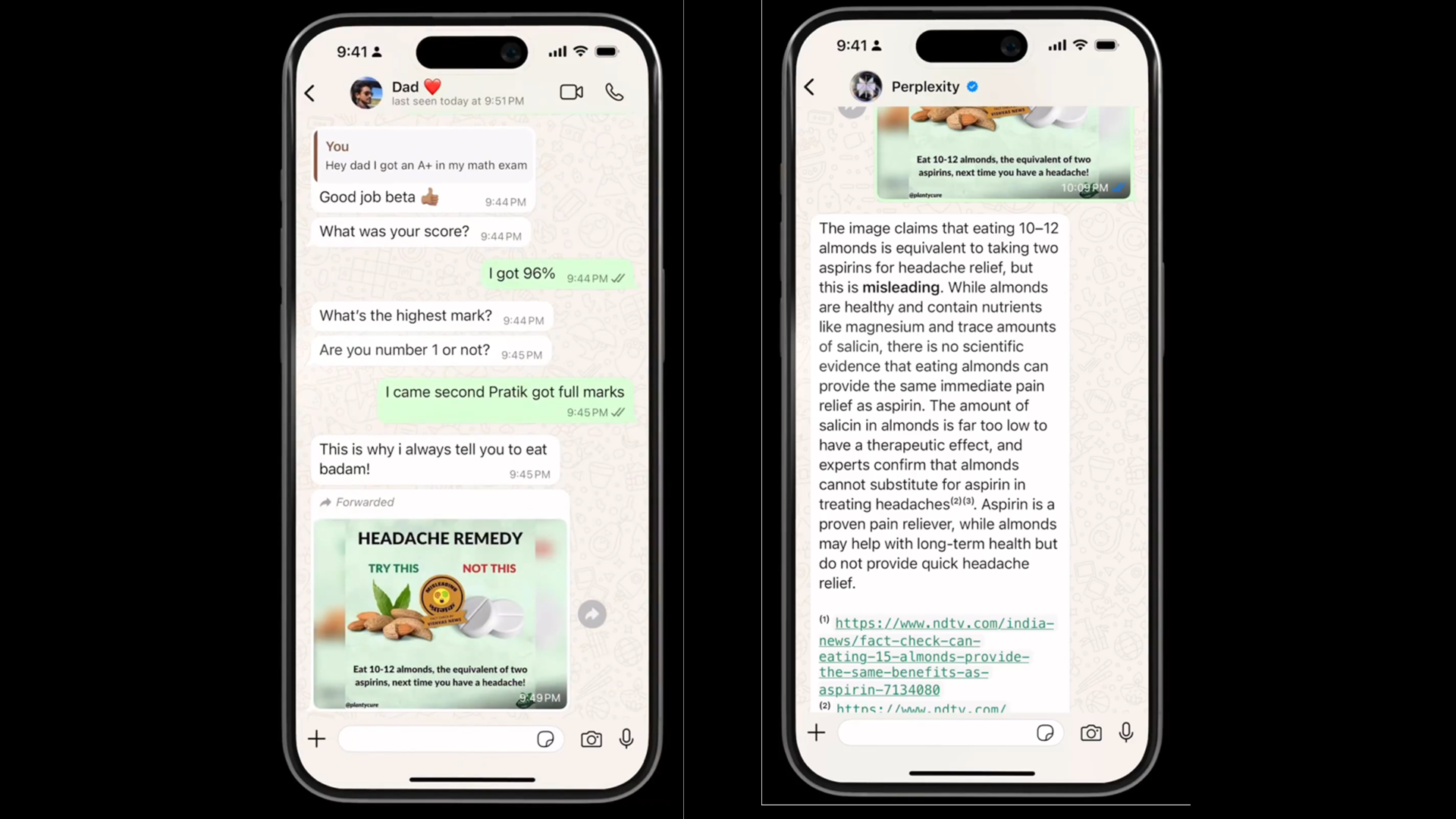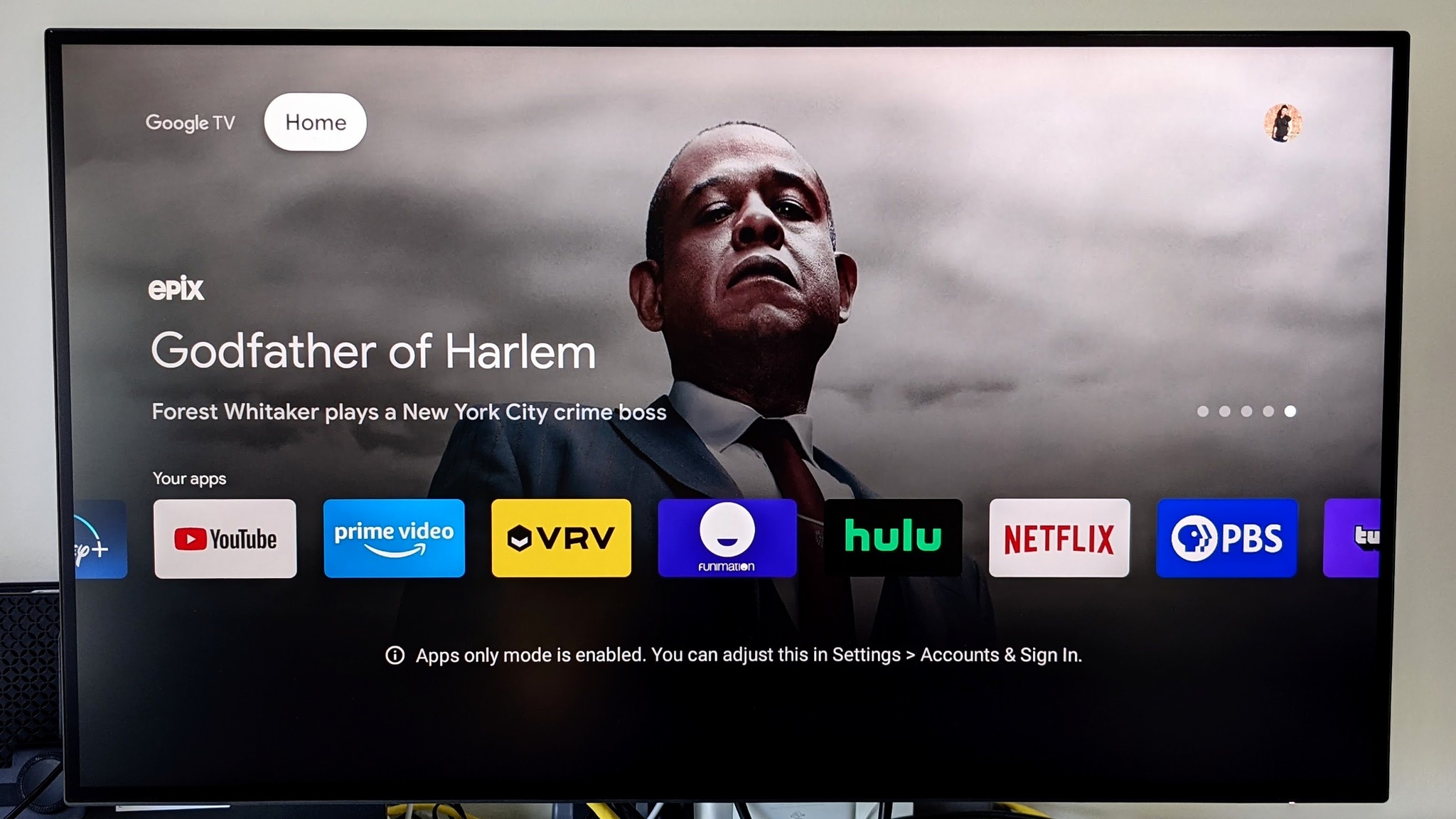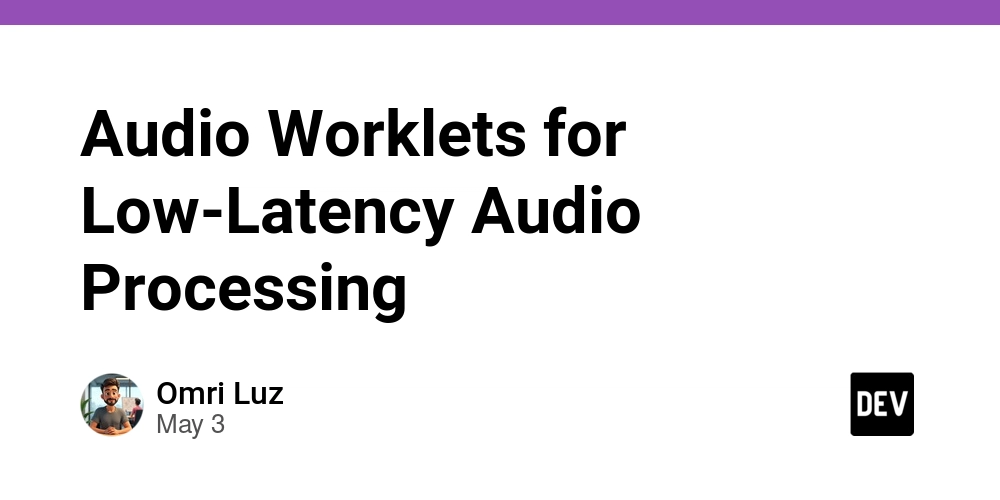From ELIZA to Conversation Modeling: Evolution of Conversational AI Systems and Paradigms
TL;DR: Conversational AI has transformed from ELIZA’s simple rule-based systems in the 1960s to today’s sophisticated platforms. The journey progressed through scripted bots in the 80s-90s, hybrid ML-rule frameworks like Rasa in the 2010s, and the revolutionary large language models of the 2020s that enabled natural, free-form interactions. Now, cutting-edge conversation modeling platforms like Parlant […] The post From ELIZA to Conversation Modeling: Evolution of Conversational AI Systems and Paradigms appeared first on MarkTechPost.

TL;DR: Conversational AI has transformed from ELIZA’s simple rule-based systems in the 1960s to today’s sophisticated platforms. The journey progressed through scripted bots in the 80s-90s, hybrid ML-rule frameworks like Rasa in the 2010s, and the revolutionary large language models of the 2020s that enabled natural, free-form interactions. Now, cutting-edge conversation modeling platforms like Parlant combine LLMs’ generative power with structured guidelines, creating experiences that are both richly interactive and practically deployable—offering developers unprecedented control, iterative flexibility, and real-world scalability.
ELIZA: The Origin of Conversational Agents (1960s)
The lineage of conversational AI begins with ELIZA, created by Joseph Weizenbaum at MIT in 1966.
ELIZA was a rule-based chatbot that used simple pattern matching and substitution rules to simulate conversation. Weizenbaum’s most famous script for ELIZA, called “DOCTOR,” parroted a Rogerian psychotherapist: it would reflect the user’s inputs back as questions or prompts. For example, if a user said “I feel stressed about work,” ELIZA might reply, “Why do you feel stressed about work?” This gave an illusion of understanding without any real comprehension of meaning.
ELIZA was one of the first programs to attempt the Turing Test (engaging in dialogue indistinguishable from a human). While it was a very simple system, ELIZA proved that humans could be momentarily convinced they were chatting with an understanding entity – a phenomenon later dubbed the “Eliza effect.” This early success sparked widespread interest and laid the foundation for chatbot development, even though ELIZA’s capabilities were rudimentary and entirely scripted.
Scripted Chatbots: Menu-Driven Systems and AIML (1980s–1990s)
After ELIZA, conversational systems remained largely rule-based but grew more sophisticated.
Many early customer service bots and phone IVR systems in the 1980s and 1990s were essentially menu-driven – they guided users through predefined options (e.g. “Press 1 for account info, 2 for support”) rather than truly “understanding” free text.
Around the same time, more advanced text-based bots used bigger rule sets and pattern libraries to appear conversational. A landmark was A.L.I.C.E. (Artificial Linguistic Internet Computer Entity), introduced in 1995 by Richard Wallace. ALICE employed a specialized scripting language called AIML (Artificial Intelligence Markup Language) to manage conversation rules. Instead of hard-coding every response, AIML let developers define patterns and template replies. As a result, ALICE had an enormous base of about 41,000 predefined templates and pattern-response pairs. This allowed it to engage in more varied, natural-sounding chats than ELIZA’s simple keyword tricks. ALICE was even awarded the Loebner Prize (a conversational AI contest) multiple times in the early 2000s.
Despite these improvements, bots like ALICE and its contemporaries still relied on static scripts. They lacked true understanding and could be easily led off-track by inputs outside their scripted patterns. In practice, developers often had to anticipate countless phrasings or guide users to stay within expected inputs (hence the popularity of menu-driven designs for reliability). By the late 1990s, the paradigm in industry was that chatbots were essentially expert systems: large collections of if-then rules or decision trees. These systems worked for narrowly defined tasks (like tech support FAQs or simple dialog games) but were brittle and labor-intensive to expand. Still, this era demonstrated that with enough rules, a chatbot could handle surprisingly complex dialogues – a stepping stone toward more data-driven approaches.
The Rise of ML and Hybrid NLU Frameworks (2010s)
The 2010s saw a shift toward machine learning (ML) in conversational AI, aiming to make chatbots less brittle and easier to build. Instead of manually writing thousands of rules, developers began using statistical Natural Language Understanding (NLU) techniques to interpret user input.
Frameworks like Google’s Dialogflow and the open-source Rasa platform (open-sourced in 2017) exemplified this hybrid approach. They let developers define intents (user’s goals) and entities (key information), and then train ML models on example phrases. The ML model generalizes from those examples, so the bot can recognize a user request even if it’s phrased in an unforeseen way. For instance, whether a user says “Book me a flight for tomorrow” or “I need to fly out tomorrow,” an intent classification model can learn to map both to the same “BookFlight” intent. This significantly reduced the need to hand-craft every possible pattern.
Over time, these NLU models incorporated Transformer-based innovations to boost accuracy. For example, Rasa introduced the DIET (Dual Intent and Entity Transformer) architecture, a lightweight transformer network for intent classification and entity extraction. Such models approach the language-understanding performance of large pre-trained transformers like BERT, but are tailored to the specific intents/entities of the chatbot. Meanwhile, the dialogue management in these frameworks was still often rule-based or followed story graphs defined by developers. In Dialogflow, one would design conversational flows with contexts and transitions. In Rasa, one could write stories or rules that specify how the bot should respond or which action to take next given the recognized intent and dialogue state.
This combination of ML + rules was a major step up. It allowed chatbots to handle more natural language variation while maintaining controlled flows for business logic. Many virtual assistants and customer support bots deployed in the late 2010s (on platforms like Facebook Messenger, Slack, or bank websites) were built this way. However, challenges remained. Designing and maintaining the conversation flows could become complex as an assistant’s scope grew. Every new feature or edge case might require adding new intents, more training data, and more dialogue branches – which risked turning into a tangle of states (a “graph-based” framework that can become overwhelmingly complex as the agent grows).
Moreover, while these systems were more flexible than pure rules, they still could fail if users went truly off-script or asked something outside the trained data.
The LLM Era: Prompt-Based Conversations and RAG (2020s)
A watershed moment came with the advent of Large Language Models (LLMs) in the early 2020s. Models like OpenAI’s GPT-3 (2020) and later ChatGPT (2022) demonstrated that a single, massive neural network trained on internet-scale data could engage in remarkably fluent open-ended conversations.
ChatGPT, for instance, can generate responses that are often difficult to distinguish from human-written text, and it can carry on a dialogue spanning many turns without explicit rules scripted by a developer. Instead of defining intents or writing dialogue trees, developers could now provide a prompt (e.g. a starting instruction like “You are a helpful customer service agent…”) and let the LLM generate the conversation. This approach flips the old paradigm: rather than the developer explicitly mapping out the conversation, the model itself learned conversational patterns from its training data and can dynamically produce answers.
However, using LLMs for reliable conversational agents brought new challenges. Firstly, large models have a fixed knowledge cutoff (ChatGPT’s base knowledge, for example, only went up to 2021 data in its initial release). And they are prone to “hallucinations” – confidently generating incorrect or fabricated information when asked something outside their knowledge.
To tackle this, a technique called Retrieval-Augmented Generation (RAG) became popular. RAG pairs the LLM with an external knowledge source: when a user asks a question, the system first retrieves relevant documents (from a database or search index) and then feeds those into the model’s context so it can base its answer on up-to-date, factual information. This method helps address the knowledge gap and reduces hallucinations by grounding the LLM’s responses in real data. Many modern QA bots and enterprise assistants use RAG – for example, a customer support chatbot might retrieve policy documents or user account info so that the LLM’s answer is accurate and personalized.
Another tool in this era is the use of system prompts and few-shot examples to steer LLM behavior. By providing instructions like “Always respond in a formal tone,” or giving examples of desired Q&A pairs, developers attempt to guide the model’s style and compliance with rules. This is powerful but not foolproof: LLMs often ignore instructions if a conversation is long or if the prompt is complex, as parts fall out of its attention.
Essentially, pure prompting lacks guarantees – it’s still the model’s learned behavior that decides the outcome. And while RAG can inject facts, it “can’t guide behavior” or enforce complex dialogue flows. For instance, RAG will help a bot cite the correct price from a database, but it won’t ensure the bot follows a company’s escalation protocol or keeps a consistent persona beyond what the prompt suggests.
By late 2024, developers had a mix of approaches for conversational AI:
- Fine-tuning an LLM on custom data to specialize it (which can be expensive and inflexible, often requiring re-training the whole model for small changes).
- Prompt engineering and RAG to leverage pre-trained LLMs without full retraining (quick to prototype, but needing careful tweaking and still lacking strong runtime control and consistency).
- Traditional frameworks (intents/flows or graphical dialog builders) which offer deterministic behavior but at the cost of flexibility and significant manual work, especially as complexity grows.
Each approach had trade-offs. Many teams found themselves combining methods and still encountering issues with consistency and maintainability. This set the stage for a new paradigm aiming to capture the best of both worlds – the knowledge and linguistic fluency of LLMs with the control and predictability of rule-based systems. This emerging paradigm is what we refer to as Conversation Modeling.
Conversation Modeling with Parlant.io: A New Paradigm
The latest development in conversational AI is the rise of Conversation Modeling platforms, with Parlant as a prime example. Parlant is an open-source Conversation Modeling Engine designed to build user-facing agents that are adaptive, yet predictable and accurate. In essence, it provides a structured way to shape an LLM-driven conversation without reverting to rigid workflows or expensive model retraining. Instead of coding up dialogue flows or endlessly tweaking prompts, a developer using Parlant focuses on writing guidelines that direct the AI’s behavior.
Guideline-Driven Conversations
Guidelines in Parlant are like contextual rules or principles that the AI agent should follow. Each guideline has a condition (when it applies) and an action (what it should make the agent do).
For example, a guideline might be: When the user is asking to book a hotel room and they haven’t specified the number of guests, then ask for the number of guests. This “when X, then Y” format encapsulates business logic or conversation policy in a flexible, declarative way. The crucial difference from old-school rules is that guidelines don’t script out the exact wording of the bot’s response or a fixed path – they simply set expectations that the generative model must adhere to.
Parlant’s engine takes care of enforcing these guidelines during the conversation. It does so by dynamically injecting the relevant guidelines into the LLM’s context at the right time.
In our hotel booking example, if the user says, “I need a hotel in New York this weekend,” Parlant would recognize that the “ask about number of guests” guideline’s condition is met. It would then load that guideline into the prompt for the LLM, so the AI’s response would be guided to, say, “Certainly! I can help with that. How many guests will be staying?” instead of the model’s default response, which might have omitted the guest count question. If another guideline says the agent should always respond enthusiastically, that guideline would also be activated, ensuring the tone is upbeat. This way, multiple guidelines can shape each response.
Importantly, Parlant keeps the model’s “cognitive load” light by only including guidelines that are contextually relevant, given the current conversation state. An agent could have dozens of guidelines defined, but the user doesn’t get bombarded with irrelevant behavior – the system is smart about which rules apply when.
This dynamic approach allows richer interactions than a static flowchart: the conversation can go in many directions, but whenever a situation arises that has a guideline, the model will consistently follow that instruction. In effect, the LLM becomes more grounded and consistent in its behavior, without losing its natural language flexibility.
Reliability, Enforcement, and Explainability
A standout feature of Parlant’s conversation modeling is how it checks and explains the agent’s decisions.
Traditional chatbots might log which intent was matched or which rule fired, but Parlant goes further. It actually supervises the AI’s output before it reaches the user to ensure that the guidelines were followed. One novel technique the Parlant team developed is called Attentive Reasoning Queries (ARQs).
In simplified terms, ARQs are an internal query the system poses (via the LLM’s reasoning capabilities) to double-check that the response satisfies the active guidelines. If something is off – say the model produced an answer that violates a guideline or contradicts a prior instruction – Parlant can catch that and correct course. This might involve instructing the model to try again or adjusting the context. The result is an extra layer of assurance that the agent’s answers are on-policy and safe before the user sees them.
From a developer’s perspective, this yields a high degree of predictability and makes it easier to debug conversations. Parlant provides extensive feedback on the agent’s decisions and interpretations. One can trace which guideline triggered at a given turn, what the model “thought” the user meant, and why it chose a certain reply.
This level of transparency is rarely available in pure LLM solutions (which can feel like a black box) and even in many ML-based frameworks. If a conversation went wrong, you can quickly see if a guideline was missing or mis-specified, or if the AI misunderstood because no guideline covered a scenario, and then adjust accordingly.
Faster Iteration and Scalable Testing
Conversation modeling also dramatically improves the development lifecycle for AI agents. In older approaches, if a business stakeholder said “Our chatbot should change its behavior in X scenario,” implementing that could mean re-writing parts of a flow, collecting new training data, or even fine-tuning a model – and then testing extensively to ensure nothing else broke. With Parlant, that request usually translates to simply adding or editing a guideline.
For instance, if the sales team decides that during holidays the bot should offer a 10% discount, a developer can implement a guideline: When it is a holiday, then the agent should offer a discount. There’s no need to retrain the language model or overhaul the dialog tree; the guideline is a modular addition.
Parlant was built so that developers can iterate quickly in response to business needs, updating the conversational behavior at the pace of changing requirements. This agility is akin to how a human manager might update a customer service script or policies, and immediately all agents follow the new policy – here, the “policies” are guidelines, and the AI agent follows them immediately once updated.
Because guidelines are discrete and declarative, it’s also easier to test and scale conversational agents built this way. Each guideline can be seen as a testable unit: one can devise example dialogues to verify that the guideline triggers properly and that the agent’s response meets expectations. Parlant’s deterministic injection of guidelines means the agent will behave consistently for a given scenario, which makes automated testing feasible (you won’t get a completely random response every time, as raw LLMs might give).
The platform’s emphasis on explainability also means you can catch regressions or unintended effects early – you’ll see if a new guideline conflicts with an existing one, for example. This approach lends itself to more robust, enterprise-grade deployments where reliability and compliance are crucial.
Integration with Business Logic and Tools
Another way Parlant stands apart is in how it separates conversational behavior from back-end logic.
Earlier chatbot frameworks sometimes entangled the two – for example, a dialog flow node might both decide what to say and invoke an API call. Parlant encourages a clean separation: use guidelines for conversation design, and use tool functions (external APIs or code) for any business logic or data retrieval.
Guidelines can trigger those tools, but they don’t contain the logic themselves. This means you can have a guideline like “When the customer asks to track an order, then retrieve the order status and communicate it.”
The actual act of looking up the order status is done by a deterministic function (so no uncertainty there), and the guideline ensures the AI knows when to call it and how to incorporate the result into the conversation. By not embedding complex computations or database queries into the AI’s prompt, Parlant avoids the pitfalls of LLMs struggling with multi-step reasoning or math.
The division of labor leads to more maintainable and reliable systems: developers can update business logic in code without touching the conversation scripts, and vice versa. It’s a design paradigm that scales well as projects grow.
Real-World Impact and Use Cases
All these capabilities make conversation modeling suitable for applications that were previously very challenging for conversational AI.
Parlant emphasizes use cases like regulated industries and high-stakes customer interactions. For example, in financial services or legal assistance, an AI agent must strictly follow compliance guidelines and wording protocols – a single off-script response can have serious consequences. Parlant’s approach ensures the agent reliably follows prescribed protocols in such domains.
In healthcare communications, accuracy and consistency are paramount; an agent should stick to approved responses and escalate when unsure. Guidelines can encode those requirements (e.g. “if user mentions a medical symptom, always provide the disclaimer and suggest scheduling an appointment”).
Brand-sensitive customer service is another area: companies want AI that reflects their brand voice and policies exactly. With conversation modeling, the brand team can literally read the guidelines as if they are a policy document for the AI. This is a big improvement over hoping an ML model “learned” the desired style from training examples.
Teams using Parlant have noted that it enables richer interactions without sacrificing control. Users aren’t forced down rigid conversational menus; instead, they can ask things naturally and the AI can handle it, because the generative model is free to respond creatively as long as it follows the playbook defined by guidelines.
At the same time, the development overhead is lower – you manage a library of guidelines (which are human-readable and modular) instead of a spaghetti of code. And when the AI does something unexpected, you have the tools to diagnose why and fix it systematically.
In short, Parlant’s conversation modeling represents a convergence of the two historical threads in chatbot evolution: the free-form flexibility of advanced AI language models with the governed reliability of rule-based systems. This paradigm is poised to define the next generation of conversational agents that are both intelligent and trustworthy, from virtual customer assistants to automated advisors across industries.
Disclaimer: The views and opinions expressed in this guest article are those of the author and do not necessarily reflect the official policy or position of Marktechpost.
The post From ELIZA to Conversation Modeling: Evolution of Conversational AI Systems and Paradigms appeared first on MarkTechPost.









































































![Apple Developing AI 'Vibe-Coding' Assistant for Xcode With Anthropic [Report]](https://www.iclarified.com/images/news/97200/97200/97200-640.jpg)
![Apple's New Ads Spotlight Apple Watch for Kids [Video]](https://www.iclarified.com/images/news/97197/97197/97197-640.jpg)














































































































_Inge_Johnsson-Alamy.jpg?width=1280&auto=webp&quality=80&disable=upscale#)




























































































































![[The AI Show Episode 145]: OpenAI Releases o3 and o4-mini, AI Is Causing “Quiet Layoffs,” Executive Order on Youth AI Education & GPT-4o’s Controversial Update](https://www.marketingaiinstitute.com/hubfs/ep%20145%20cover.png)





























































































































































![From Art School Drop-out to Microsoft Engineer with Shashi Lo [Podcast #170]](https://cdn.hashnode.com/res/hashnode/image/upload/v1746203291209/439bf16b-c820-4fe8-b69e-94d80533b2df.png?#)






































































































